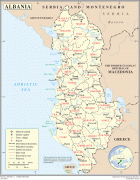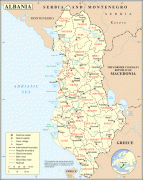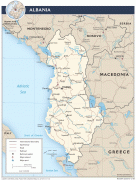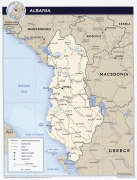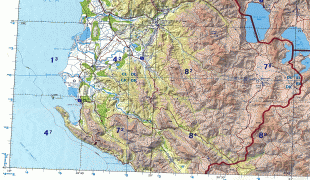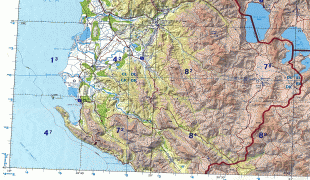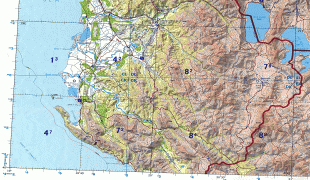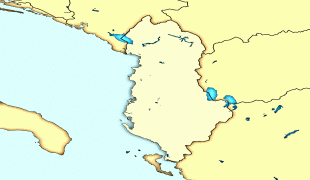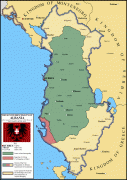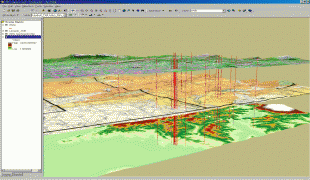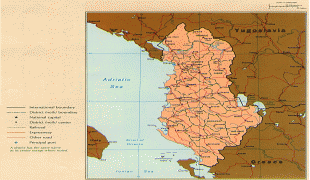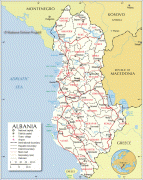Albania (Republic of Albania)
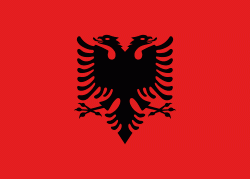 |
 |
| Flag of Albania | |
Albania has been inhabited by different civilisations over time, such as the Illyrians, Thracians, Ancient Greeks, Romans, Byzantines, Venetians, and Ottomans. The Albanians established the autonomous Principality of Arbër in the 12th century. The Kingdom of Albania and Principality of Albania formed between the 13th and 14th centuries. Prior to the Ottoman conquest of Albania in the 15th century, the Albanian resistance to Ottoman expansion into Europe led by Skanderbeg won them acclaim over most of Europe. Albania remained under Ottoman rule for nearly five centuries, during which many Albanians (known as Arnauts) attained high-ranking offices in the empire, especially in the Southern Balkans and Egypt. Between the 18th and 19th centuries, cultural developments, widely attributed to Albanians having gathered both spiritual and intellectual strength, conclusively led to the Albanian Renaissance. After the defeat of the Ottomans in the Balkan Wars, the modern nation state of Albania declared independence in 1912. In the 20th century, the Kingdom of Albania was invaded by Italy, which formed Greater Albania before becoming a protectorate of Nazi Germany. Enver Hoxha formed the People's Socialist Republic of Albania after World War II, modeled under the terms of Hoxhaism. The Revolutions of 1991 concluded the fall of communism in Albania and eventually the establishment of the current Republic of Albania.
Albania is a unitary parliamentary constitutional republic. It is a developing country, ranking 67th in the Human Development Index, with an upper-middle income economy dominated by the service sector, followed by manufacturing. It went through a process of transition following the end of communism in 1990, from centralised planning to a market-based economy. Albania provides universal health care and free primary and secondary education to its citizens. Albania is a member of the United Nations, World Bank, UNESCO, NATO, WTO, COE, OSCE, and OIC. It has been an official candidate for membership in the European Union since 2014. It is one of the founding members of the Energy Community, including the Organization of the Black Sea Economic Cooperation and Union for the Mediterranean.
The term Albania is the medieval Latin name of the country. It may be derived from the Illyrian tribe of Albani (Albanët) recorded by Ptolemy, the geographer and astronomer from Alexandria, who drafted a map in 150 AD which shows the city of Albanopolis located northeast of Durrës. The term may have a continuation in the name of a medieval settlement called Albanon or Arbanon, although it is not certain that this was the same place. In his history written in the 10th century, the Byzantine historian Michael Attaliates was the first to refer to Albanoi as having taken part in a revolt against Constantinople in 1043 and to the Arbanitai as subjects of the Duke of Dyrrachium. During the Middle Ages, the Albanians called their country Arbëri or Arbëni and referred to themselves as Arbëreshë or Arbëneshë.
Nowadays, Albanians call their country Shqipëri or Shqipëria. The words Shqipëri and Shqiptar are attested from 14th century onwards, but it was only at the end of 17th and beginning of the early 18th centuries that the placename Shqipëria and the ethnic demonym Shqiptarë gradually replaced Arbëria and Arbëreshë amongst Albanian speakers. The two terms are popularly interpreted as "Land of the Eagles" and "Children of the Eagles".
Currency / Language
| ISO | Currency | Symbol | Significant figures |
|---|---|---|---|
| ALL | Albanian lek | L | 2 |
| ISO | Language |
|---|---|
| SQ | Albanian language |
| EL | Greek language |








